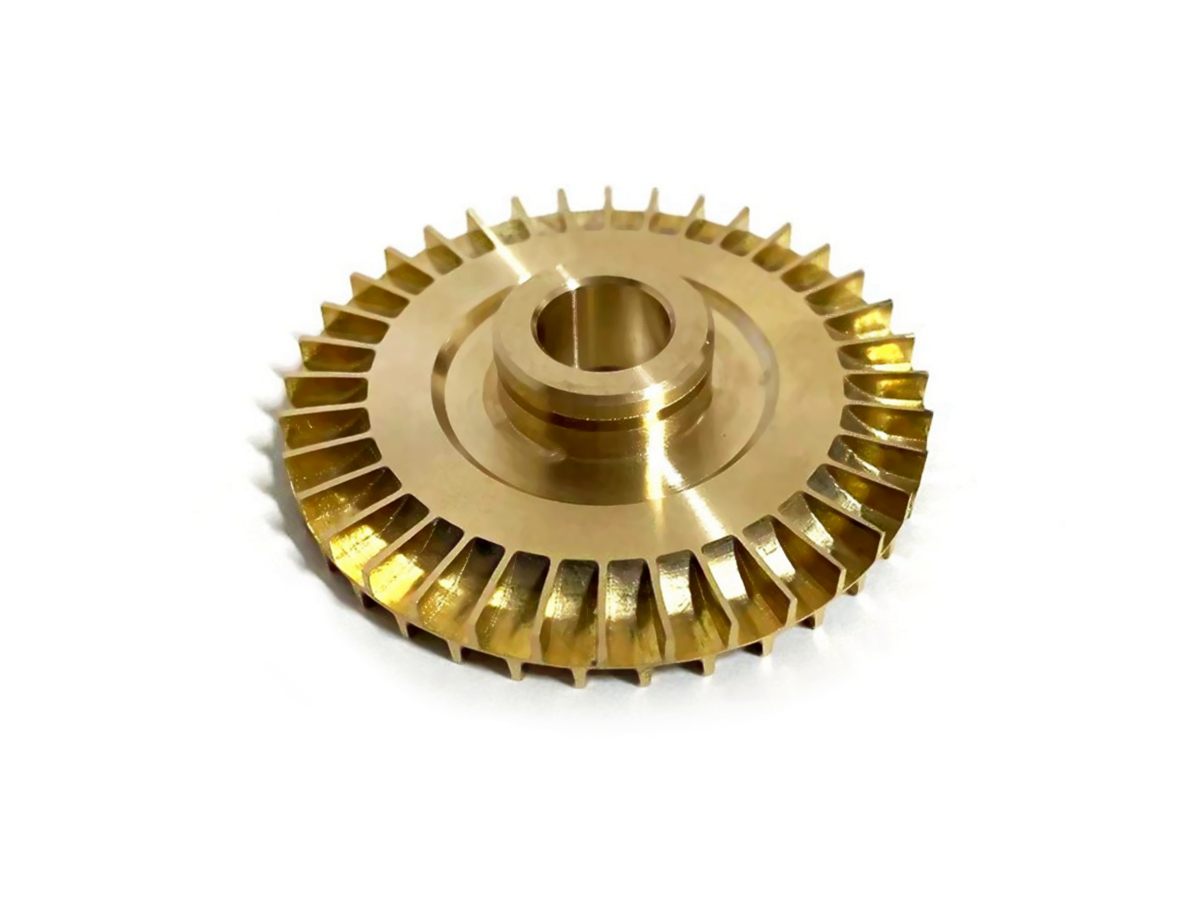CNC Machined Brass and Copper Parts for Robust Generator Systems
Introduction to CNC Machined Brass and Copper Parts for Generator Systems
In generator systems, components must withstand high electrical loads, mechanical stress, and environmental factors to ensure reliable performance. CNC machining of brass and copper offers the precision and durability required for these critical applications. Brass and copper alloys are widely used in generator systems for their excellent electrical conductivity, corrosion resistance, and ability to handle high temperatures and mechanical stress.
CNC machining for generator systems enables the production of custom, high-performance components like connectors, bus bars, heat exchangers, and electrical terminals. These components contribute to efficient power generation, ensuring longevity and reliable performance under demanding conditions, especially in high-load and high-temperature environments.
Material Performance Comparison for Brass and Copper Parts in Generator Systems
Material | Tensile Strength (MPa) | Thermal Conductivity (W/m·K) | Machinability | Corrosion Resistance | Typical Applications | Advantages |
|---|---|---|---|---|---|---|
210-260 | 390 | Excellent | Good | Electrical connectors, bus bars | Superior electrical conductivity, corrosion resistance | |
210-240 | 390 | Excellent | Good | Electrical components, terminals | High thermal and electrical conductivity | |
550-700 | 120 | Excellent | Moderate | Connectors, fittings | Good machinability, corrosion resistance | |
400-500 | 110 | Excellent | Moderate | Generator casings, electrical terminals | Durable, excellent wear resistance |
Material Selection Strategy for Brass and Copper Parts in Generator Systems
Copper C101 (Oxygen-Free Copper) is highly valued for its superior electrical conductivity (390 W/m·K), making it ideal for electrical connectors, bus bars, and other parts that need to conduct electricity efficiently. With a tensile strength of 210-260 MPa, it also provides good corrosion resistance and mechanical durability in generator systems.
Copper C110 (TU0) is another excellent choice for electrical components and terminals due to its high thermal and electrical conductivity. This material ensures that the generator's electrical system runs smoothly, even under high power loads, and offers good performance in various environments.
Brass C360 is often selected for its excellent machinability and tensile strength (550-700 MPa), which is essential for producing durable components like connectors and fittings in generator systems. Its moderate corrosion resistance makes it an ideal option for parts requiring mechanical strength and machining ease.
Brass C23000 (Yellow Brass) is commonly used for generator casings and electrical terminals due to its durability and good wear resistance. With a tensile strength of 400-500 MPa, it provides adequate strength for parts exposed to mechanical stress in generator applications while also offering moderate corrosion resistance.
CNC Machining Processes for Brass and Copper Parts in Generator Systems
CNC Machining Process | Dimensional Accuracy (mm) | Surface Roughness (Ra μm) | Typical Applications | Key Advantages |
|---|---|---|---|---|
±0.005 | 0.2-0.8 | Connectors, bus bars | High precision, complex geometries | |
±0.005-0.01 | 0.4-1.2 | Electrical terminals, connectors | Excellent rotational accuracy | |
±0.01-0.02 | 0.8-1.6 | Mounting holes, flanges | Accurate hole placement | |
±0.002-0.005 | 0.1-0.4 | Surface-sensitive components | Superior surface smoothness |
CNC Process Selection Strategy for Brass and Copper Parts
Precision CNC Milling is ideal for producing complex brass and copper components like connectors, bus bars, and electrical terminals. With tight tolerances (±0.005 mm) and fine surface finishes (Ra ≤0.8 µm), this process ensures the high precision and durability required in critical generator parts.
CNC Turning produces cylindrical components such as electrical terminals, bushings, and other rotational parts. It ensures excellent rotational accuracy (±0.005 mm), essential for parts requiring high symmetry and smooth surfaces in generator systems.
CNC Drilling ensures precise hole placement (±0.01 mm), which is crucial for parts like mounting holes and flanges. This process guarantees that the components fit securely in assemblies, reducing the risk of misalignment or failure during operation.
CNC Grinding is used to achieve superior surface finishes (Ra ≤ 0.4 µm) on brass and copper components. This process ensures that parts, particularly sealing components and electrical contacts, have smooth, high-quality surfaces that minimize wear and improve electrical conductivity.
Surface Treatment for Brass and Copper Parts in Generator Systems
Treatment Method | Surface Roughness (Ra μm) | Corrosion Resistance | Hardness (HV) | Applications |
|---|---|---|---|---|
0.1-0.4 | Superior (>1000 hrs ASTM B117) | N/A | Electrical connectors, bus bars | |
0.2-0.8 | Excellent (>1000 hrs ASTM B117) | N/A | Pressure vessels, electrical terminals | |
0.2-0.6 | Excellent (>800 hrs ASTM B117) | 1000-1200 | Brass and copper components | |
0.2-0.6 | Superior (>1000 hrs ASTM B117) | 800-1000 | High-performance components, terminals |
Typical Prototyping Methods
CNC Machining Prototyping: High-precision prototypes (±0.005 mm) for functional testing of brass and copper components used in generator systems.
Rapid Molding Prototyping: Fast and accurate prototyping for brass and copper parts like connectors, bus bars, and heat exchangers.
3D Printing Prototyping: Quick turnaround prototyping (±0.1 mm accuracy) for initial design validation of brass and copper components.
Quality Inspection Procedures
CMM Inspection (ISO 10360-2): Dimensional brass and copper parts verification with tight tolerances.
Surface Roughness Test (ISO 4287): Ensures the surface quality for precision components in generator systems.
Salt Spray Test (ASTM B117): Verifies corrosion resistance performance of brass and copper parts in harsh environments.
Visual Inspection (ISO 2859-1, AQL 1.0): Confirms aesthetic and functional quality of brass and copper components.
ISO 9001:2015 Documentation: Ensures traceability, consistency, and compliance with industry standards.
Industry Applications
Power Generation: Brass and copper connectors, bus bars, electrical terminals, heat exchangers.
Automotive: Electrical components, connectors, cooling parts.
Medical Device: Surgical tools, diagnostic devices, precision components.
FAQs:
Why are brass and copper used in generator systems?
How does CNC machining improve the precision of brass and copper parts?
Which brass and copper alloys are most suitable for power generation applications?
What surface treatments improve the durability of brass and copper parts?
What prototyping methods are best for brass and copper components used in generator systems?

